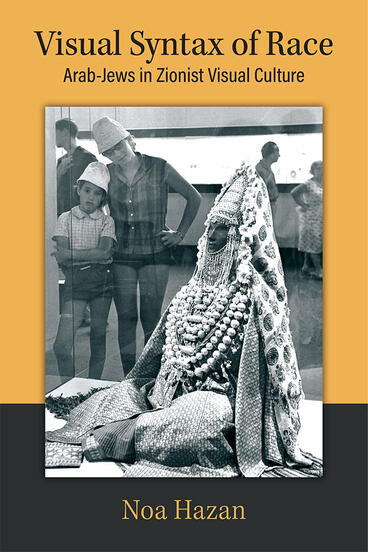Visual Syntax of Race
Arab-Jews in Zionist Visual Culture
The visual representation of racial thought
Description
Analyzing the visual syntax and display rhetoric applied in newspaper photos, national historical albums, and museum exhibitions, Noa Hazan shows that although racial thought was and still is verbally suppressed in Israel, it is vividly present in its nonverbal official and public visual sphere. The racist perspective of newspaper editors, book publishers, photographers, and museum curators were morally justified in its time by such patronizing ideals as realistic news coverage or the salvation of Jewish heritage assets. Although their perspectives played a dominant role in establishing a visual syntax of race in Israel, they were not seen as racially discriminating at the time. The racist motifs and actions are revealed here by colligating multiple cases into a coherent narrative in retrospect.
This book points to a direct influence of the anti-Semitic discourse in Europe toward Mizrahim in Israel, highlighting the shared visual stereotypes used in both Europe and the fledgling state of Israel. Engraved in their body, these cultural traits were depicted and understood as racial-biological qualities and were visually manipulated to silo Ashkenazim and Mizrahim in Israel as distinct racial types.
Noa Hazan is an Independent Scholar and is co-editor of the books Visual Culture in Israel and The Mountain, the Dome and the Gaze: The Temple Mount in Israeli Visual Culture.
Reviews
“This book is a model of innovative and insightful academic contribution. Hazan offers a blueprint for understanding the mechanism of racial construct in visual text, both hidden and visible. It forces readers to reconsider the pervasiveness of race in visual representation, and rethink its location in the eyes of subjects, viewers, and the public.”
- Shoshana Madmoni-Gerber
—Shoshana Madmoni-Gerber, Suffolk University
“Hazan’s insightful Visual Syntax of Race skillfully unpacks the racialization of Arab-Jews/Mizrahim within Israeli institutional apparati. Deploying an interdisciplinary approach, this visual culture book astutely decodes Eurocentric modes of imaging, in a vital contribution to the expanding field of Arab-Jewish/Mizrahi studies.”
- Ella Shohat
—Ella Shohat, NYU, author of Taboo Memories, Diasporic
“An acute and convincing call for scholars, curators, and visual practitioners to examine the ‘to-be-looked-at-ness’ of Mizrahi bodies in Israeli public culture, this highly original and thoroughly researched study appears in a moment of an ever-growing academic and public interest in seeing Jews and Jewish history through race.”
- Yigal S. Nizri
—Yigal S. Nizri, Department for the Study of Religion, University of Toronto
“This study exposes the underpinnings of the visual language of Mizrahi racialization in Israel in print media and exhibitions whereupon the category of race is absent. It delineates the transposing of European anti-Semitic visual tropes into the Israeli ethnic realities where Ashkenazi Jews turn from the other of Europe to Europe of the other.”
- Yaron Shemer
—Yaron Shemer, University of North Carolina Chapel Hill
Honorable Mention: Association for Israel Studies (AIS) 2023 Shapiro Award for Best Book in Israel Studies
- AIS Shapiro Award for Best Book in Israel Studies

